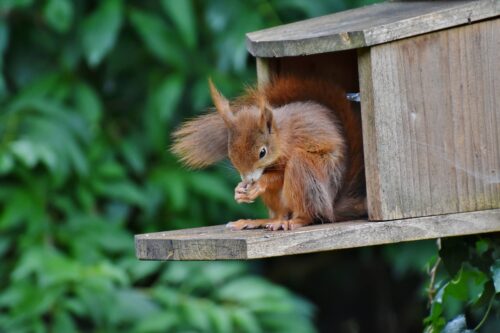Grow Squirrel Resistant Flower Bulbs That Keep Them Away from your garden and protect your flowering plants from damage.
For generations, gardeners and squirrels have engaged in a timeless battle. Despite countless efforts to deter them with fences and contraptions, these crafty rodents always seem to find a way into gardens and flower beds. If you’re tired of squirrels ruining your tulip and crocus bulbs, try a different approach: plant bulbs that squirrels tend to avoid. By opting for bulb plants that aren’t appealing to squirrels, you can enjoy perennial flowers without constantly fretting about underground invaders raiding your garden.
Read: How to Keep Squirrels Away from Garden
Flower Bulbs That Repel Squirrels

In contrast to larger animals like deer, which feed on leaves and flowers, squirrels have a more direct approach—they dig up bulbs themselves. While they may resort to eating any bulb when desperate, squirrel-resistant flower bulbs possess qualities that deter them. Bulbs containing poisonous ingredients or milky sap are typically less attractive to squirrels, as are those with less palatable tastes compared to the rest of your garden.
Squirrel Resistant Flower Bulbs

Flower bulbs that repel squirrels can bloom throughout the growing season, offering a continuous display of flowers from spring to fall. By opting for bulb plants that squirrels tend to avoid, you can easily fill your flower bed with a variety of blooms. Some of the most sought-after varieties include:
1. Daffodils (Narcissus)
It is one of the most dependable signs of spring, a beloved garden staple that squirrels typically avoid eating. Their cup-shaped blooms perch atop 18-inch (46 cm) stems and create a stunning display when planted en masse in beds.
2. Hyacinth (Hyacinthus)
This robust bloomer is available in a spectrum of colors ranging from red to soothing blues and purples. Like many perennial bulb plants, hyacinths make the biggest impact when planted in clusters of at least 10 plants.
3. Glory of the Snow (Chionodoxa luciliae)
If you appreciate crocus for its ability to emerge through snow early in spring, you’ll also adore the glory of the snow for the same trait. The star-shaped blue flowers serve as a pleasant indication that winter is nearly at its end.
4. Siberian Iris (Iris sibirica)
It provides vibrant early-season color and showcases intricate, frilly flowers that squirrels tend to avoid.
5. Lily-of-the-Valley (Convallaria majalis)
Lily-of-the-valley stems bear delicate, white, bell-shaped flowers with a sweet fragrance, accompanied by medium-bright green, lance-shaped leaves. Even more appealing is their ability to flourish in shady corners of the garden.
6. Fritillaria (Fritillaria)
These unique plants can reach heights of up to 5 feet (1.5 m) and boast a wide array of bloom shapes and colors. Some fritillaria varieties even feature petals adorned with a striking checkerboard design.
7. Alliums (Allium)
Related to onions, alliums boast large, spherical flowers available in a range of colors, including white, pink, purple, yellow, and blue. Due to their strong odor, squirrels keep away from these bulbs.
8. White Squill (Scilla mischtschenkoana)
This flower bulb displays spikes of star-shaped flowers with a blue streak down the center of the bloom. It appears from late winter through early spring.



